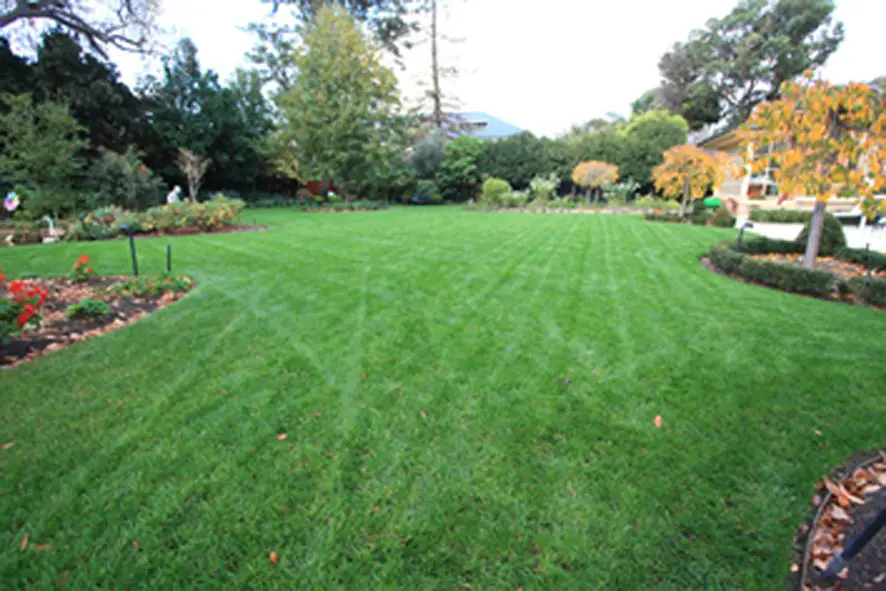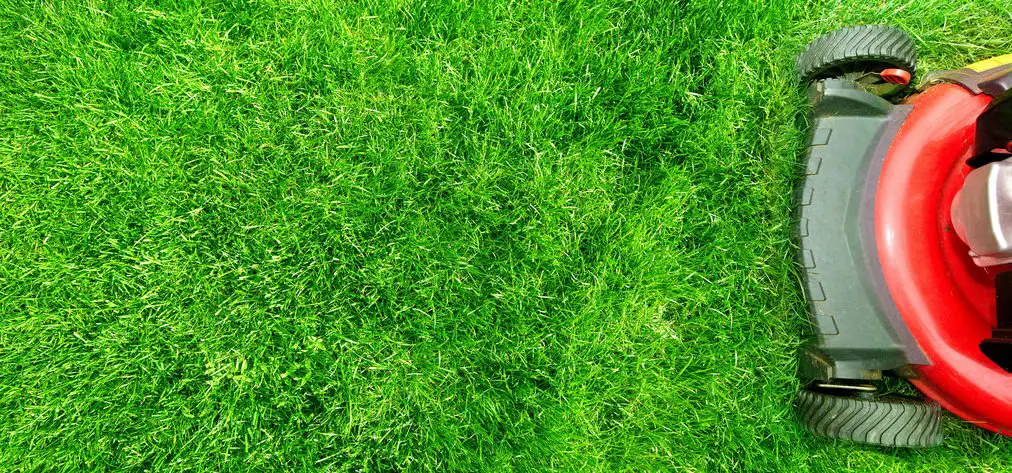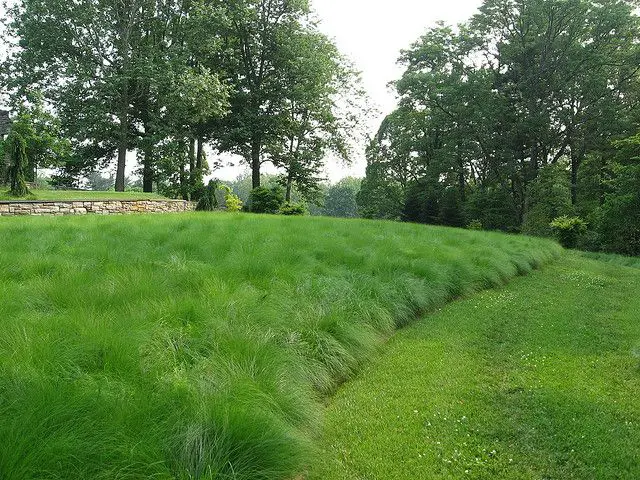Spread The Grass Seed
Its seeding time! Just fill up your Scotts® spreader with grass seed, adjust the spreader settings according to the label directionsuse the New Lawn coverage rateand apply. The Scotts® Whirl Hand-Powered Spreader is an extremely easy-to-use choice for small lawns , while the Scotts® Turf Builder® Edgeguard® DLX Broadcast Spreader brings exceptional precision when youre applying seed to larger lawns . For really big lawns , the Scotts® Elite Spreader, with its 6-foot spread pattern, will help you get the job done quickly.
Seed And Fertiliser Spreader
Spreading grass seed and fertiliser is pretty easy to do by hand if you only have a small lawn.
That said, its much more accurate with a spreader and if you have a big lawn, its really the only way to do it.
You can buy small, handheld spreaders for small areas or wheeled, broadcast spreaders for larger lawns.
What About Care After Overseeding
Depending on conditions and type of seed, new grass seed will begin to emerge in 5-7 days after seeding when moisture and soil temperatures are adequate. An overseeded lawn can be fully established in eight weeks or less.
Proper watering is critical to successful overseeding. The following is a recommended watering program.
- Immediately after overseeding: Water heavily to wash grass seeds into slits.
- Until grass seeds germinate : Water lightly on a daily basis, soaking first one inch of soil.
- After germination: Water less frequently, but allow for deeper soaking and penetration into soil. This encourages deeper root growth.
- After grass becomes established: Water at the recommended level for the type of grass planted.
The key is care and patience. Proper overseeding will produce a healthier, better-looking lawn that responds better to mowing, fertilizing and watering. An added benefit is increased property value!
Read Also: Ecoscraps Vs Milorganite
Overseeding Your Tired Grass Can Give It A Much
Summer can take a lot out of your lawn. Hot, dry conditions and heavy shade cause the most grass damage. Outbreaks of disease and insect activity can make matters worse. And if you have kids or pets, your lawn may be worn to shreds, exposing the soil beneath. Not good!
General yard maintenance helps. But like other home assets, such as your exterior walls and kitchen appliances, the amount of TLC you give your lawn can go a long way. Overseeding after a summers worth of stress and abuse will pay dividends, keeping your lawn looking and performing its best once the snow melts next spring.
Your lawn cant dodge general wear and tear caused by Mother Nature. And the way you and your family use your lawn can add to your maintenance woes. By seasons end, your lawn is tired and showing signs of stress.
On This Page
Do I Need To Reseed Grass Each Year

Related Articles
A healthy lawn is lush and green and doesnt have any unsightly dead or bare patches. Reseeding, which is also referred to as overseeding, involves sowing seed over existing grass to prevent thinning and bare patches. However, this doesnt have to be done every year. How often you should reseed your lawn depends on several factors, including the amount of traffic it receives and its overall condition.
Don’t Miss: Best Lawn Chair Ever
How Long Does It Take Grass Seed To Germinate And Grow
Grass seed can take from 5-30 days to germinate and this depends on several factors which include
- The type of grass seed you choose
- How much moisture and warmth is in the soil
- The weather in general, and
- How fertile the ground is
That said, most people should see germination within a couple of weeks.
How To Prepare The Soil
Before you start reseeding, you should prepare the soil well. Because everything you do before, you will not have to do later with double or triple the time.
First, mow the entire lawn. Choose the shortest cut setting on your lawnmower. This way you can easily identify small areas that need repair. Meticulously remove all root debris and plants. You should also remove moss while youre at it.
Now you can start scarifying the lawn. You can scarify the entire lawn if you wish.If you dont have any experience with scarifying lawns, there are a few things you should keep in mind. After all, when youre cutting the ground, things can go wrong sometimes.
If you have scarified the lawn, you should now apply the starter fertilizer. The best way to do this is to fill the fertilizer into a spreader. A spreader is particularly suitable for large areas. This ensures that the fertilizer is well distributed over the area. Pay attention to the quantities on the package, but about 25 grams per 10 ft² should be sufficient.
You May Like: Simple Lawn Solutions Aerator
When You Should Sow Grass Seed
You can sow Lawn UK lawn seed mixtures at any time from late March to mid-October providing that in periods of unusually dry weather the seedbed is kept constantly moist until the grass is about 6cm high. Always water with a fine spray to great a force of water will displace the seeds. It is also worth noting, that there needs to be adequate warmth in the soil, 6-8 degrees Celsius is required for germination, and this is usually when the air temperature is above 10 degrees Celsius.
If during periods of drought, and there is no hosepipe ban, you may decide to water the area. You must ensure the ground is thoroughly soaked and watering must be done on a regular basis until the grass has become established. Occasional light watering wont be beneficial, this will do more harm than good.
When is the best time to sow the seed?
This depends on you. If you want to sow in the Spring, you can sow any time from late March onwards. However, if you are patient, there is much to recommend waiting until September before you sow. Firstly, any weed seeds lying on or near the surface of the seedbed will be given a chance to germinate and can be removed. Secondly, English summers may produce hot, dry spells and if your new lawn is sown in the spring, constant watering may well be necessary to get growth started and to avoid the tender young seedlings from being scorched and killed off.
A few notes on weeds
When Should I Be Over
It is best to over-seed your lawn twice a year, once in the spring and once in the autumn. You need to over-seed in spring to prepare for the intense usage and wear and tear during the summer months. In autumn, over-seeding helps to repair any damages and patches caused by the summer. Furthermore, weeds are less active during the autumn months. Therefore grass seeds can germinate freely without competition, resulting in less weed problems.
To prevent moss, fill in any patchy areas with lawn seed before moss starts to grow. This usually happens later on in the autumn and in early spring. Creating a thicker lawn helps to prevent moss growing as it has little space to grow. Read our article on How to get rid of Moss from your Lawn for more information.
Also Check: Rgs Grass
How Much Do I Water A Newly Reseeded Lawn
After you noticed some thin spots in your lawn, you smartly opted for reseeding to strengthen them before weeds or insect pests could move in and manage those spots in their ways.
Following expert advice like the kind youll get here at Sharp Lawn Care, you reseeded in the fall or you did it in the spring with extreme care, and you did it after a thorough aeration treatment that cleared out the thatch layer, rejuvenated the soil, and allowed for water, sunlight, and other essential nutrients to penetrate and nurture the roots.
So far, youve done everything right. Excellent! Now, though, you have to manage those newly planted seeds and the new growth, and on your end, one of the biggest parts of that is watering.
Everyone knows about the problems a lawn faces when it isnt getting enough water, but not everyone knows that there are problems that come from being watered too much. By that, we dont mean rare events such as floods or days and days of heavy rain we mean well-intentioned homeowners who are overwatering their lawns and not even realizing it.
Grass needs plenty of water to nurture the roots and promote lush growth, but too much water can hurt it. If youre seeing puddles in newly reseeded areas after you water, or if youre noticing that the soil is waterlogged or soggy, youre seeing signs that you might be overwatering.
To Creating A Dense Lush Covering Of Grass
No one likes thin, patchy lawns.
They look unhealthy and are the perfect spaces for weeds and moss to inhabit.
Overseeding helps to create a dense covering of grass. This not only creates a thick, green, healthy-looking lawn, it also makes it more resistant to disease. And it crowds out weeds and moss, making it harder for them to grow and establish.
You May Like: Core Aerator Rental Lowes
Human Traffic Can Cause Damage
Sometimes the very people who stand to benefit the most from a nice lawn can be among the biggest threats to it! After you plant new seeds, its best to stay off those areas until the seeds establish themselves and new, solid growth has begun. This is especially the case after you have watered because thats a time when the seeds and the soil are more easily disturbed.
So hold off on that big outdoor party or letting the kids use the lawn for soccer practice. If you have to, stake off the sensitive areas to help keep people out of them. The time and patience you invest will pay off!
Can You Fertilize Your Lawn Too Much

Its very easy to fertilize your lawn too much. Fertilizing your lawn with too much fertilizer in one application or not allowing enough time between applications, leads to three problems.
As long as you follow the instructions found on the packaging of the fertilizer, the three problems above can be easily avoided.
You May Like: How To Stop Racoons From Digging Up Lawn
Broadcast Seed With A Cyclone Or Drop
This second method of overseeding is also effective, if youre unable to use a slit-seeder. Aerate several times before broadcasting seed aeration holes should be spaced not more than 2-3 inches apart. Use core-type aerating tines that remove soil plugs for better seed-to-soil contact. After overseeding, give the area a heavy watering right away to wash seed into the aeration holes and help break up the aeration cores on the surface.
One challenge with broadcast seeding is that much of the seed gets hung up in the thatch layer and does not get into the soil where it can germinate. Be sure to use grasses that have a creeping growth method to ensure even growth grass types that do not spread will grow in the aeration holes only and give the turf a clump or spotted look. Remember broadcast seeding requires more grass seed and the germination rate is not as high as with slit-seeding.
Consistent Soil Moisture Is Key
Take advantage of the season, when cooler temperatures and more consistent soil moisture make things less stressful for delicate, newly forming grass blades. Fall rains tend to be gentler than those in spring, allowing the water to soak into the soil where it will do some good. In addition, less irrigation is required because the hottest weather will have passed. Weeds and pests are less prevalent, too, lessening competition and stress on new grass.
Also Check: Is Cub Cadet Made In Usa
How To Aerate Your Lawn
Aerating your lawn is simple and easy. Regardless of which type of aerator you choose, these are the steps you need to take.
Once you are finished, water generously. Some professionals recommend applying fertilizer to assist in recovery, but its not completely necessary.
The Best Time Of Year To Aerate Your Lawn
The best time of year to aerate your lawn is just before the high growth season, which varies by grass type. The best time of year to aerate cool-season grass, like Kentucky bluegrass and creeping red fescue, is at the beginning of the Spring and Fall. The best time to aerate warm-season grass, like St. Augustine grass and zoysia grass, is late Spring.
If youre not sure what type of grass you have, this helpful resource on Scotts.com will help.
The growing season is the ideal time of year to aerate because roots will take advantage of their newly found access to water and nutrients, helping the lawn recover quickly as they grow.
Read Also: How To Price Lawn Mowing Jobs
How Long Does Grass Seed Take To Grow
How long it will take for your new grass seed to begin to grow really depends on where you live, your climate and what type of grass you plant. It can take anywhere between 3 and 28 days for new grass seed to begin to grow.
A beautiful, vibrant lawn not only looks great, but it also provides a place for you and your family to play, relax and enjoy. A consistent water schedule for watering new grass seed is key to making sure youre growing a healthy, lush green lawn that will give you years of enjoyment and beauty.
| Previous Article |
How Much Grass Seed
When youve decided which lawn seed to use, the instructions should tell you the rate at which it needs to be applied. Quite often the over seeding rate is lower than the rate for starting a new lawn though sometimes adding more, particularly if rye grass is included, will speed recovery. However, if you are trying to improve your lawn by changing the type of seed then adding more will cause more of a change.
Do NOT automatically assume more is better! Ive seen patch repairs done where you cant see the soil for grass seed. This will cause extremely dense growth that will stick out like a sore thumb. If in doubt stick to about 10 to 20 seeds per square inch.
The next page will cover all the variables for seeding rates.
Don’t Miss: Keeping Rabbits Off Lawn
How To Overseed Lawns
Preparation is an important part of the process. Rake and aerate the seedbed. Remove rocks and debris. Use the correct amount of seed in a seed spreader. Every species has a specific recommended seed rate.
Use a starter fertilizer to get the plants off to a healthy start. It is also a good idea to use a pre-emergent herbicide safe for young grass seedlings. Once you apply the seed, you may top dress lightly with soil but in most cases, the aeration holes will catch the seed and they will grow there without top dressing.
Keep the area evenly moist until you see the seeds sprout. Then you can reduce irrigation gradually to match normally watering schedules. Wait to mow the grass until the area has filled in and the blades are at least an inch high.
When Is The Best Time To Overseed

Hands down, early fall is the best time to overseed your lawn. The absolute sweet spot for most northern regions of the U.S. is August 15 to September 15. Thats when daytime temperatures are still warm enough to encourage growth and nights get cooler, giving new seedlings a break from the heat. Lawn grasses like that. Soil temperatures are ideal, too, resulting in quicker seed germination.
But dont let missing that perfect seeding window stop you. Depending on where you live, overseeding can be done all the way through September and into early October. Weed competition is virtually nonexistent and predictable rains fall softly with few gully washers that could wipe out your efforts in 15 minutes. All these factors create the perfect late summer/early fall window for overseeding your lawn.
Read Also: Tru Green Lawn Care Prices
Recommended Steps For Complete Renovation
Tip: Reduce the recommended seeding rate by one-half and cover the area twice, in two directions, leaving a cross-hatch seeded pattern at a 45º angle.
Note: Whether or not a chemical such as Glyphosate is used, it usually works better to overseed new grass into the old, undisturbed turf, even if it is dead, rather than start with bare dirt. Overseeding is faster and easier than completely digging up the soil, and it leaves some cover to protect against wind or water erosion of the soil surface.
